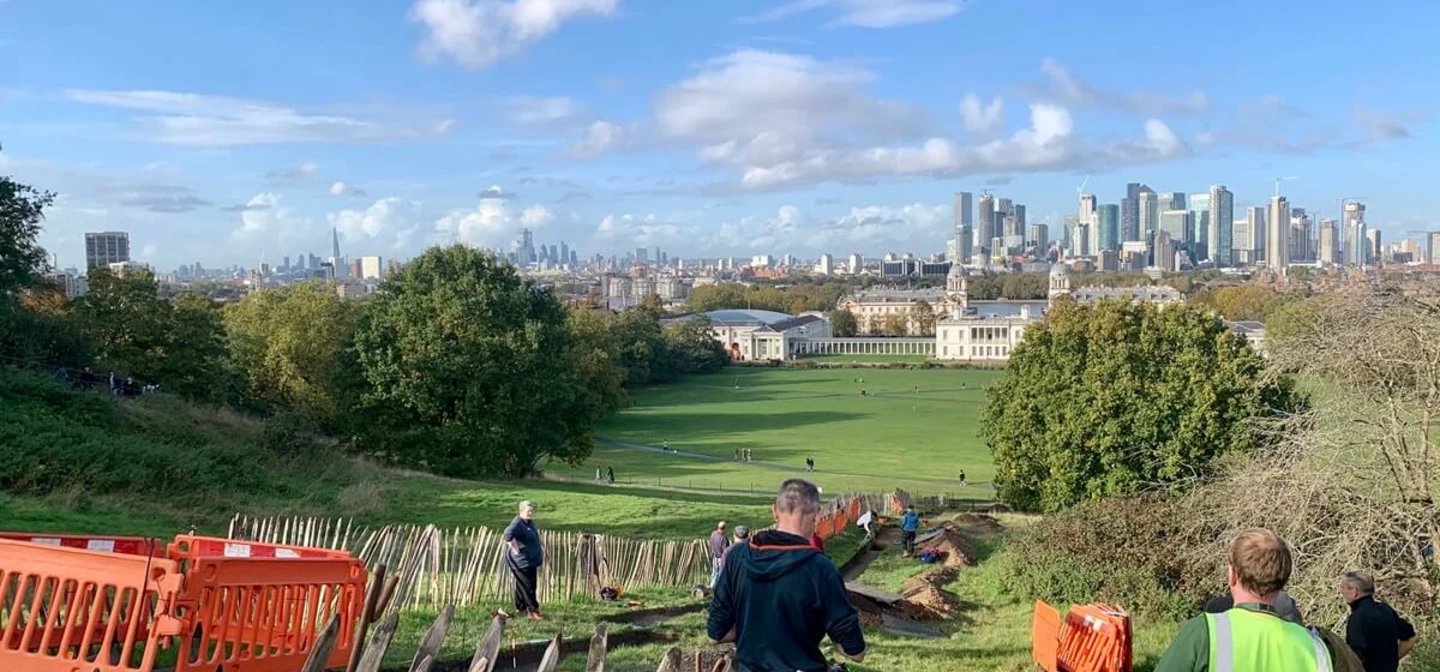
A dig with a grand view
Over the past few months, the Greenwich Park Revealed archaeology team have been working on the Grand Ascent, the slope below the General Wolfe statue. Thanks to the incredible commitment of many brilliant volunteers, we have made some grand discoveries...
The site's history
The Grand Ascent formed part of King Charles II’s plans for Greenwich Park. Influenced by gardens in France, the idea was to build an enormous water cascade on the slope facing the Queen’s House. Labourers working for Sir William Boreman (a minor nobleman, clerk to the Royal Household, and philanthropist) dug, levelled and turfed up to 12 large terraces. These would presumably have been capped with stone to channel water brought to the top of the ridge, down the terraces, to a grotto below. Alongside this work, French landscape architect André Le Nôtre designed a parterre - a formal garden - on the lower, flattened slope, stretching north to the Queen’s House. With most of the earthworks complete, the scheme was paused before being abandoned by the early 1670’s. Could the archaeology confirm the history of the site?
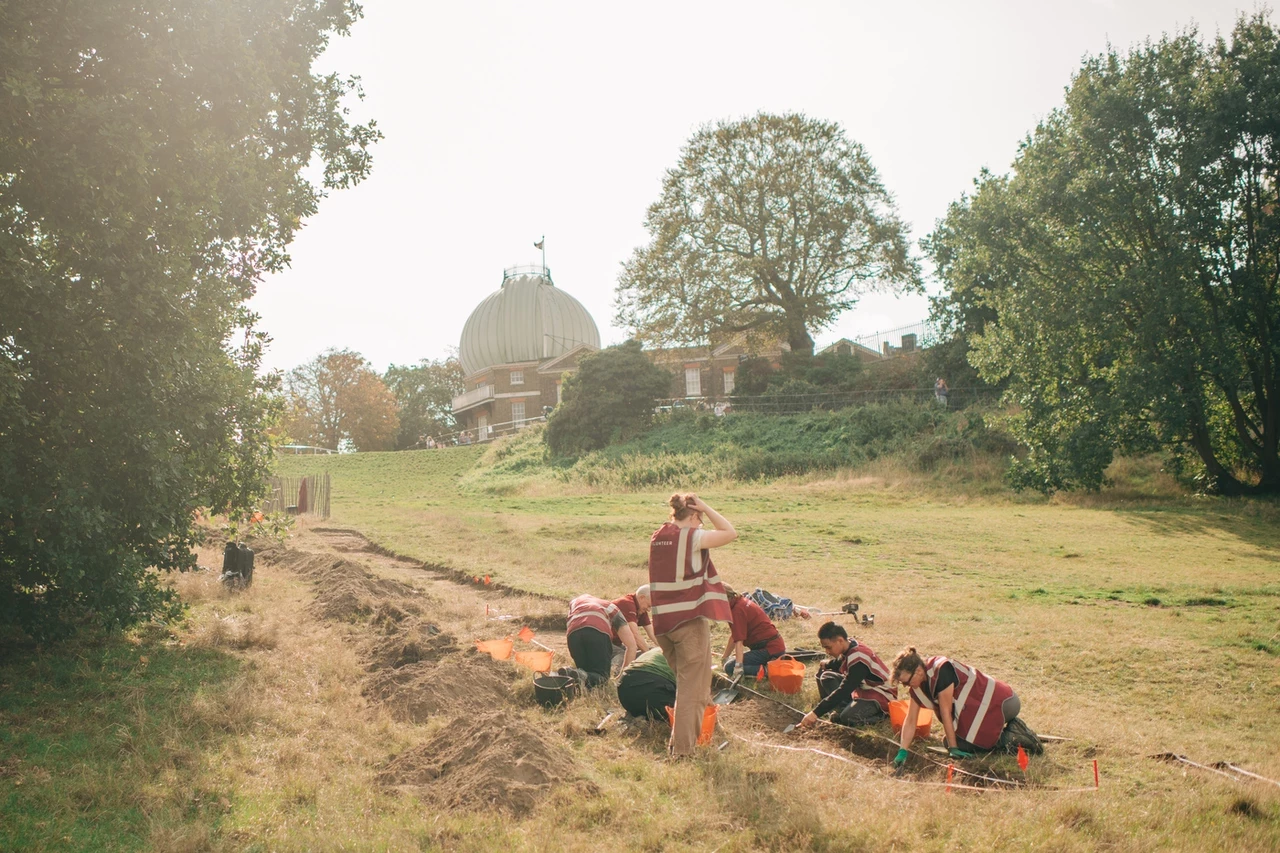
The dig
Our mission was to dig a trench from the top to the bottom of the hill, carefully removing the topsoil to reveal the layers below. We also dug a series of deeper slots to explore the archaeology beneath. In mid-September we started the first of nine trenches on the hillside. The team of volunteers consisted of local residents and many people signing up through The Royal Parks volunteering hub from across London and further afield.
After carefully removing the turf, we came down to a topsoil full of finds dropped or lost on the hillside over the past two hundred years. These included everything from a mobile phone to a Royal Engineers cap badge, part of a sextant (a nautical navigational instrument), claypipes and beads from necklaces and dresses. Below the topsoil was a very compact clay layer that we think had been laid across the hillside to repair the erosion below. Where we investigated beneath the clay, we encountered bands of loose gravel and probable buried turflines in layers over a metre deep. At the base of the sequence, we recorded layers full of rubble and tile. What does it all mean?
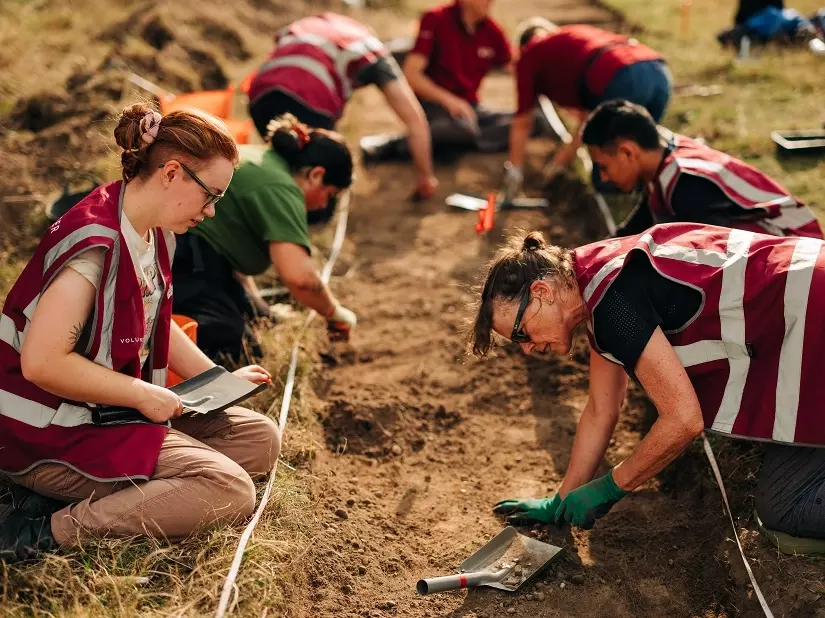
Discovering the lost terraces
At the start of the dig, we didn’t know if the lost terraces from Boreman’s work were close to the surface or deeper down. We now know that they survive at depth, under metres of hillwash and erosion. Because the original terraces were never covered with stone, they have slipped down the hillside over the subsequent four hundred years and buried what’s left of King Charles II’s scheme. At the lowest levels, the layers are full of broken brick and tile. We think this has come either from the demolition of the former Tudor castle on the hilltop, or perhaps the construction process from the Royal Observatory that replaced it.
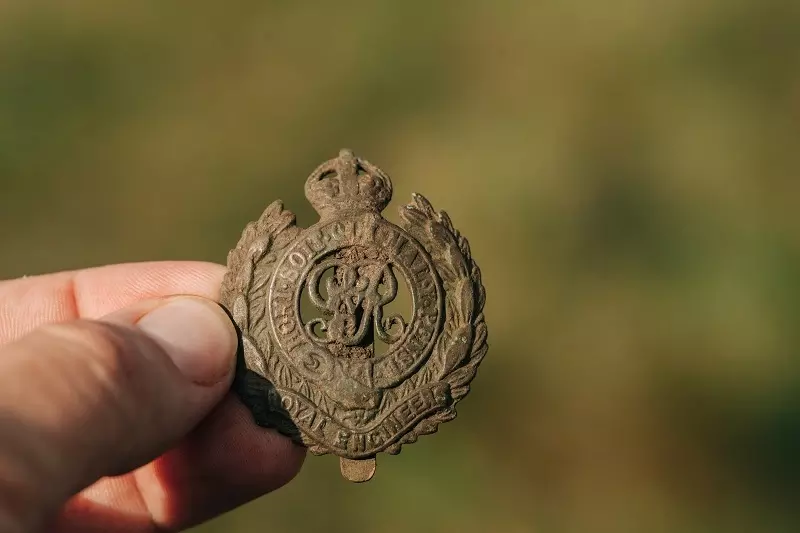
Next steps
Over the next few months, we will process the finds from the dig. The brick and pottery pieces will be examined by specialists, and this will all feed into a final report on this fascinating and enigmatic site. Thank you to everyone who has supported this project. The dig took place in all weathers and on a 45-degree slope. However, it was also a dig with the greatest view at breaktimes!
There are more archaeology projects to come in 2024, so stay tuned!
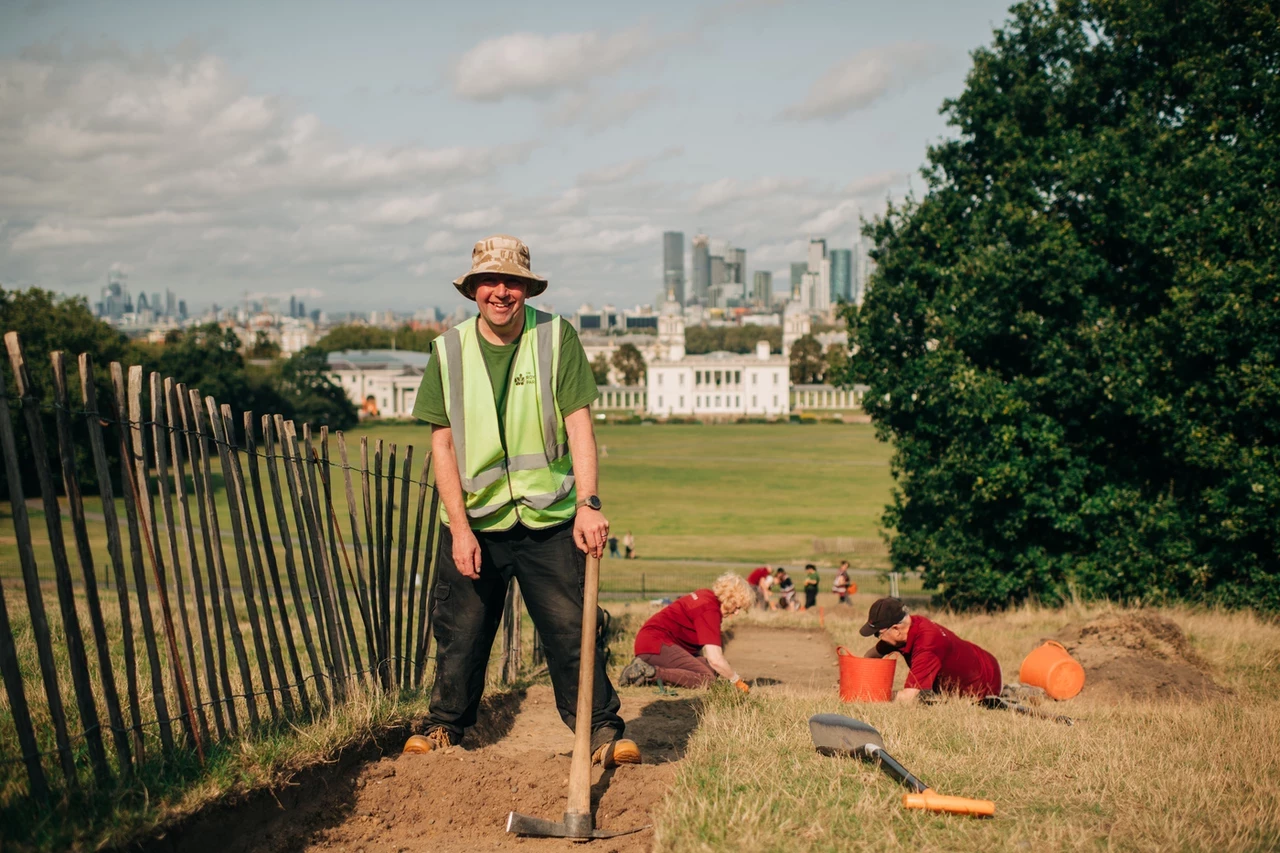
You may also like...
-

Volunteer with us
Would you like to volunteer with us? Our volunteers play a vital role in looking after the parks and support a wide-range of activities.
-
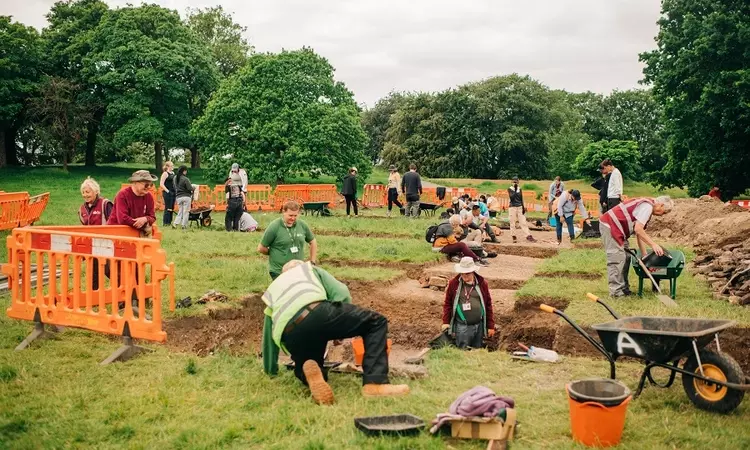
Unearthing an air raid shelter in Greenwich Park
As part of our Greenwich Park Revealed project to restore and protect the park we delivered a community dig to find out more about a lost air raid shelter.
-
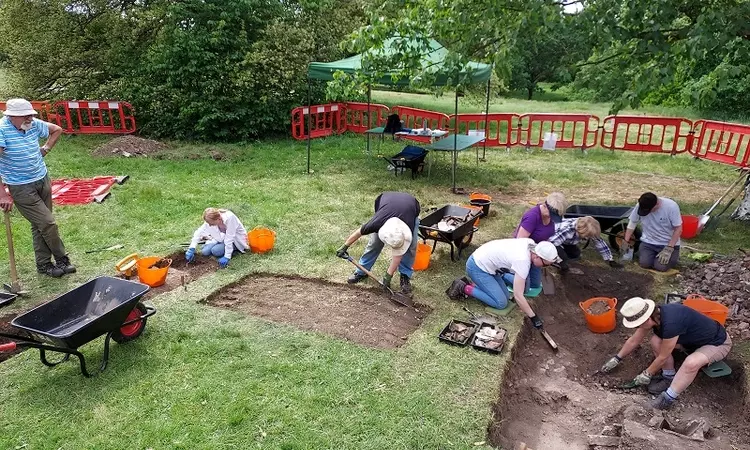
Magnetic observatory community dig
Community Archaeologist Andrew Mayfield organised a dig this May, to search for clues to Greenwich Park's former magnetic observatory.
-
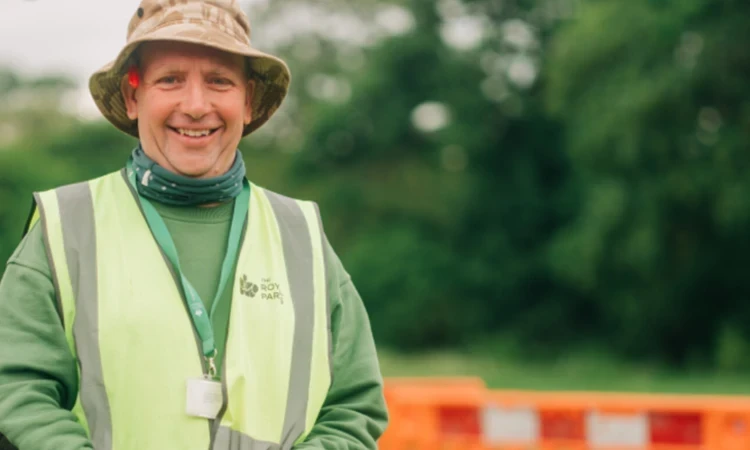
Greenwich Park: An Archaeologist's Diary
Andrew Mayfield, our new community archaeologist – and the first in-house archaeologist ever to be appointed at The Royal Parks
-
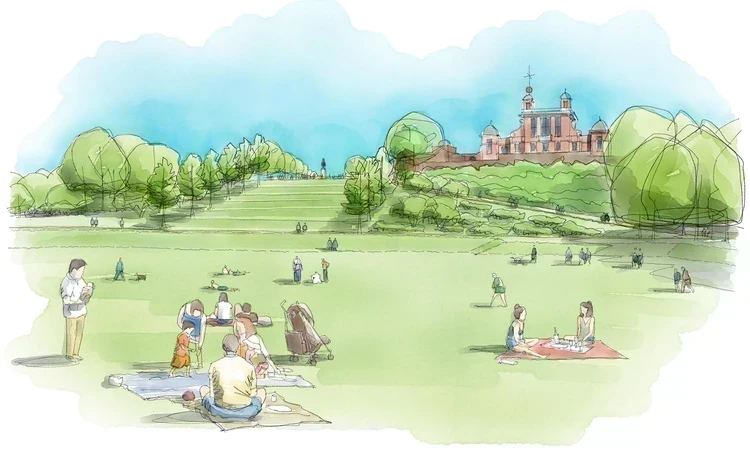
Historic landscape restoration
The Royal Park’s park restoration project, Greenwich Park Revealed, will restore the park’s historic landscape and bring its unique history to life.
Related Articles
-
 Read
ReadGreenwich Park: An Archaeologist's Diary
Andrew Mayfield, our new community archaeologist – and the first in-house archaeologist ever to be appointed at The Royal Parks
-

Guide to London’s Arches & Gates
Explore prominent London arches and gates. Visit Wellington Arch and Marble Arch in Hyde Park and uncover the Seven Gates of London with the Royal Parks.
-
 Read
ReadUnearthing an air raid shelter in Greenwich Park
As part of our Greenwich Park Revealed project to restore and protect the park we delivered a community dig to find out more about a lost air raid shelter.